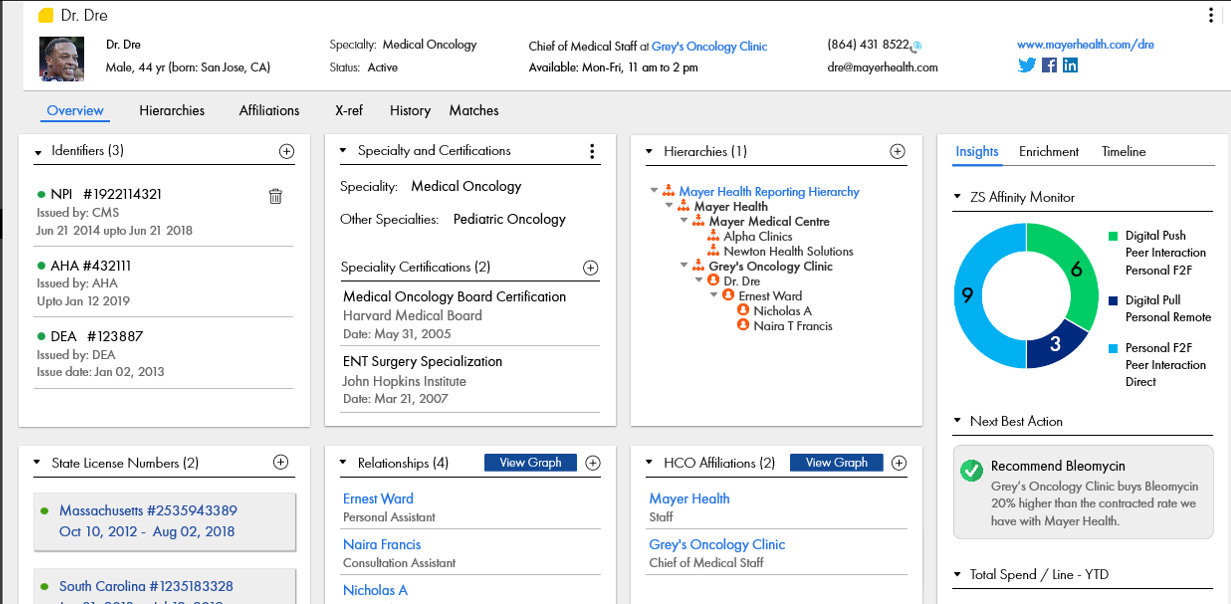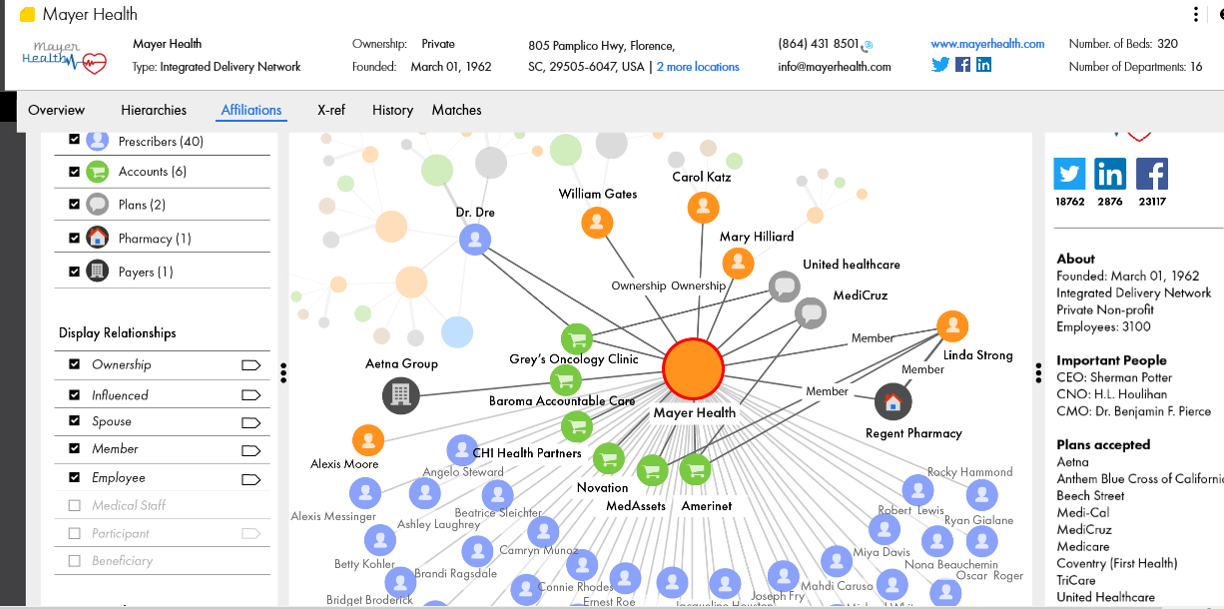Reimagined MDM for Business Users: An Introduction to Customer 360 for Life Sciences
 In their January 2017 Magic Quadrant for master data management (MDM), Gartner predicted a huge disruption in how customers will invest in MDM solutions. By 2020, 80% of all master data management (MDM) solution revenue will be driven by support for all of the buying organization's requirements around industries, data domains, use cases, organizations and MDM implementation styles, up from less than 15% in 2015. A 65% swing in software purchasing behaviour within 5 years is certainly worth noting. It’s a trend we noticed as well, and one of the reasons we began building master data fuelled applications a few years ago. Product 360, Customer 360 and Supplier 360 were among the first of these.
In their January 2017 Magic Quadrant for master data management (MDM), Gartner predicted a huge disruption in how customers will invest in MDM solutions. By 2020, 80% of all master data management (MDM) solution revenue will be driven by support for all of the buying organization's requirements around industries, data domains, use cases, organizations and MDM implementation styles, up from less than 15% in 2015. A 65% swing in software purchasing behaviour within 5 years is certainly worth noting. It’s a trend we noticed as well, and one of the reasons we began building master data fuelled applications a few years ago. Product 360, Customer 360 and Supplier 360 were among the first of these.
Interestingly, the report does not expand on what is driving this dramatic change in purchasing behaviour. I imagine a significant portion of the change is due to the increasing availability of industry, domain or use case specific MDM offerings. As organizations increasingly want to use data outside of the applications that created them, MDM is becoming almost mandatory. MDM as a technology and business practice creates a trusted and consistent view of master data on which to base new business processes and next gen analytics. Given MDM will underpin many future developments, the urgency to implement the technology is increasing.
Industry, Domain and use case specific MDM should become more attractive as the software is specifically designed to deliver a faster time to value than a generic MDM solution.
Informatica’s recently announced Cloud MDM Customer 360 for Life Sciences solution is an excellent example of this. We have pre-configured our Customer 360 solution specifically for the business side of the life science industry who are operating in a changing, and increasingly complex healthcare ecosystem. We anticipate this solution will accelerate time to value by reducing the amount of costly customizations required for typical MDM implementations. The prefigured capabilities include[i]:
- Data model covering Prescriber, Account, Payer and Affiliations domains
- Pre-configured UI layer for business and data steward users
- Pre-configured Data Quality rules
- Pre-built “Plug-and-Play” data connectors to industry standard data sources
These features all contribute to faster business value from an MDM project by shortening the implementation cycle.
The features also enable significant focus to be placed on critical data management tasks. In turn, data management requires business users' collaborative agreement: How to describe entities; Where is the best source of the data; What constitutes high quality data; Rules for selecting the correct value if there are conflicts; etc.
So, getting buy-in from business users can compress time to value for an MDM project even further by streamlining the data management tasks mentioned above. Customer 360 for Life Sciences will accelerate business buy-in because it has an attractive UI designed for business users and it:
- Has intuitive navigation, visualization, and drill-down capabilities
- Directly addresses the data complexity behind the industry’s complexity
- Provides a single view of trusted customer data accessible and usable by the business
As much as data management purists think that a great looking and highly functional UI should not make a difference to value delivery – it does. This is why all our MDM 360 solutions are designed with business users in mind (as well as data stewards, we haven’t forgotten them). As a result, the data management mechanisms and impacts become more transparent and business users are more easily engaged in the MDM project: They can be drawn in very early on; The visuals will capture their attention and keep them engaged; They will immediately understand the context of the data and what the project aims to achieve; They are more likely to dedicate time and resources during implementation; Adoption of the output (high quality master data) will be faster.
A positive business user experience with MDM will contribute significantly to accelerated time to value by ensuring project engagement and fast adoption.
Ultimately MDM projects are designed to benefit the business. For example, Customer MDM projects are proven to contribute to increased revenue and better ROI on marketing spend. In this context, Gartner’s MDM revenue prediction makes sense. If MDM practitioners want to deliver value, they need to ensure business buy-in. Domain, use case or industry specific MDM solutions help win that buy-in early on, and maintain commitment to MDM as a practice.
In order to ensure our Customer 360 for Life Sciences solution is, and remains, highly relevant to the industry, we collaborated closely with industry experts ZS Associates. Our MDM strength coupled with their deep industry knowledge has been very well received to date, and our long-standing partnership with ZS will ensure we can out-perform on expectations that are already at a high standard.
[i] More details in the Customer 360 for Life Sciences solution brief









